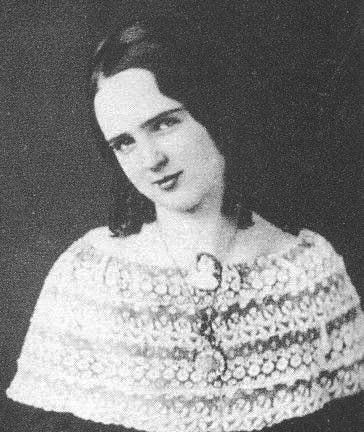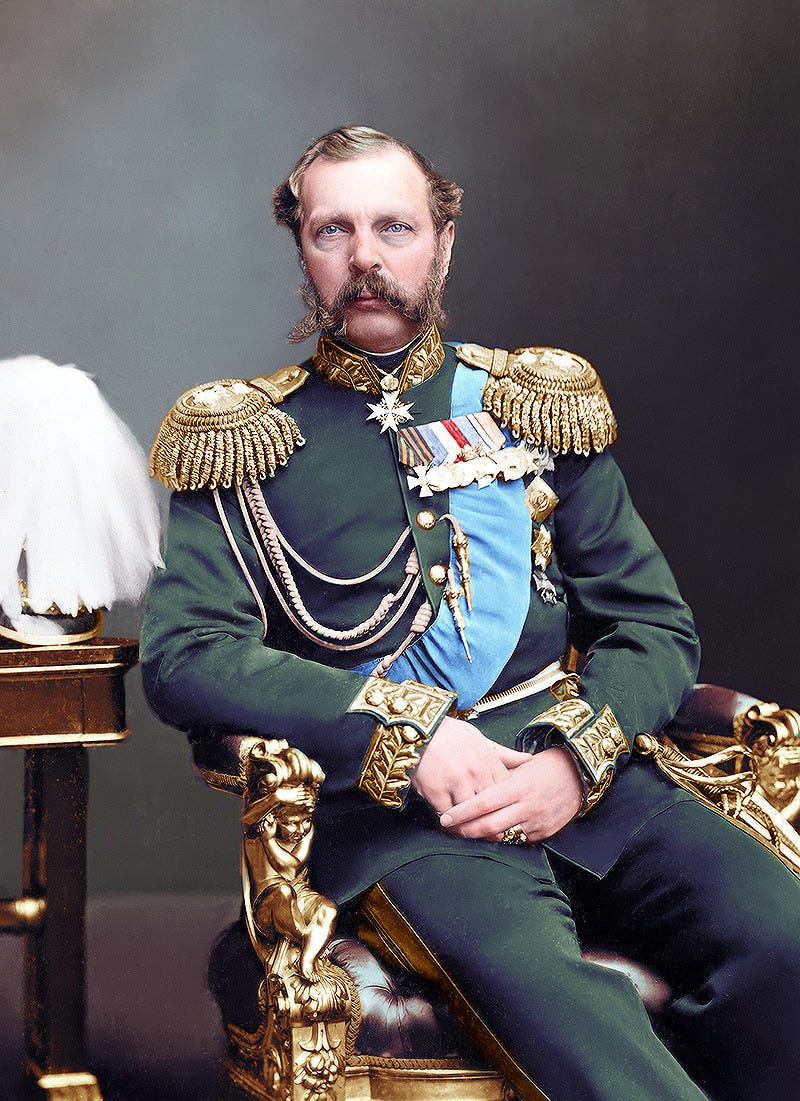The REAL Scarlet O'Hara is Lucy Pickens
She captivated the hearts of Southern soldiers ... and the Czar's of Russia

An “Ancien Regime” Lost in the Mists of Time
My grandmother’s father was a captain of infantry in the Confederate army from South Carolina and I am old enough to remember her lamenting every now and then when I was a kid about the Reconstruction period in the South and expressing a mild resentment for the victors in the war which proceeded it.
That was a very long time ago and those laments had by then lost their relevance in a modern and strongly resurgent South. She was too gentle and kind to harbor ill-will for anybody, including Northerners, but she felt deep nostalgia for the life she had as a child of Southern culture and felt that it had been taken away by strangers.
Margaret Mitchell’s book “Gone With the Wind” was a fanciful effort to recapture how life was in the Antebellum South in the period just before, during and after the Civil War. Of all the colorful characters in that book, perhaps none stands out more sharply than her heroine, Scarlet O’Hara, a vivacious young woman who steals the heart of just about every male she encounters.
And most males can probably relate. My early school years were spent pining away for one pretty girl after another and getting soundly rejected every time. On the eve of Valentine’s Day in fourth grade, I summoned all the courage I had as I walked over to Mary Evelyn’s desk and timidly extended a beautiful card while meekly asking her to be my Valentine.
“No!,” she explained.
Mitchell’s book received worldwide acclaim and won her the 1937 Pulitzer Prize. It also encapsulated the rich tapestry of Southern society and the culture of a strongly traditional agrarian aristocracy in the throes of radical change. The movie which followed featured Clark Gable as Rhett Butler and Vivien Leigh as Scarlet as well as the remarkable, Hattie McDaniel, who won an Oscar for her role as “Mammy”, Scarlet’s personal maid.
But it was Scarlet who topped the cast of characters. And, believe it or not, she was not altogether fictional.
The model for Scarlet was the real-life Southern belle, Lucy Holcombe Pickens, a beautiful and strong-willed young woman who charmed the Southern nation and won the hearts of its army.
This heart-winning business was fully hyped in the movie, so replete with fake Southern drawls that you could almost smell the lugustrum and honeysuckle wafting through the magnolias.
In the summer of 1857, this spirited young woman, barely out of her teens, met Colonel Francis Pickens, an old widower from South Carolina, old enough to be her father. He proceeded to court her but, no, she wanted none of that.
However, in January 1858, he accepted an appointment as the US ambassador to the Court of Tsar Alexander II in Russia. Suddenly, with the intoxicating prospect of being next to royalty, she accepted his previous proposal and left behind her a lengthy trail of broken hearts.
The newlyweds became favorite at the Russian court. Lucy and her husband were befriended by Alexander and his wife, Maria Alexandrova, who became godparents to the daughter Lucy bore while in Russia, Eugenia Frances Dorothea Olga Neva—the last two names being added by the Tsarina. The Tsar called little baby Frances, Douschka, "Darling" in Russian, a nickname she kept all her life.

After leaving Russia, the family settled at “Edgewood” plantation near Edgefield, South Carolina in August, 1860. Pickens was elected Governor that year just before the start of the war. Lucy later sold some of the jewelry given to her by the Tsar to raise money for a unit of Confederate soldiers who named themselves “The Holcombe Legion”.
Some of their freed slaves stayed on to work at Edgewood as sharecroppers, but the transition to free labor was difficult and costly. Lucinda stayed with Lucy to continue caring for "Douschka." In 1869 Francis died. Lucy, a young widow at 37, had to learn how to run the plantation. South Carolina was devastated and her struggle was difficult. Yet she proved as tough as she was beautiful until her death in 1899.
But the movie version of Lucy’s Old South didn’t represent the South as it actually was. One reason is that the South is not a solid bloc and it’s not unified and neither was it before nor during the civil War. You can’t find any two states anywhere as different as Louisiana and Virginia or Mississippi and South Carolina or, for that matter, Southern Louisiana and Northern Louisiana. Several non-slave regions around the South tried to secede from the Confederacy prior to the war. West Virginia, in fact, did exactly that.
Regardless, I believe what they all shared in common was a passion for home and country and for bravery and gentleness and a determination to die if necessary to save those things. I think that’s what my grandmother sometimes grieved about on those days so long ago.
(Eat Your History is an ongoing research project to find and reveal those unexpected parts of our planet and our history which have been overlooked by the publishers of history books.
You can be a major part of Eat Your History by becoming a paid subscriber and helping me to continue providing its rich content.
I hope you’ll consider it today.)
Thanks,
Bob











